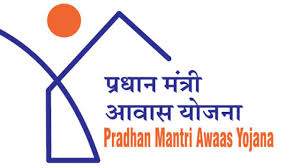Airtel is making use of the premium airwaves in the 900MHz spectrum for deploying 2G services, but going forward, the telco will use this spectrum for deploying the 4G network.
Airtel to Use 900MHz Band for 4G Instead of 2G
Gopal Vittal, CEO of Bharti Airtel, said about this development to ET, “We are seeing dramatic growth in 4G demand, and over a period of time, the 900 Mhz band will purely serve our 4G customers, while 2G services will be continue to be available on the 1800 Mhz band.”
Emphasising the transition from 2G/3G to 4G, Vittal also highlighted that there is no substantial revenue being generated from 3G networks thus signalling that Airtel might soon shut down its 3G operations. The fact was pretty evident as Vittal said, “the demise of 3G technology is rapidly drawing near”. The executive also further said that they would have a “transition strategy” in place to accomplish the consumer migration from 3G network to 4G network while the telco finds its way to deploy the 900MHz band for 4G network.
Vittal took the chance on the earnings call, a day after Airtel declared profits of Rs 119 crore on a consolidated basis, to share the plans of deploying the airwaves for 4G network all the while expressing distaste towards the 2G/3G network. The executive also announced that it has already reframed the 900MHz airwaves in Karnataka for 4G services and said that the company would replicate the move in other states as well. He said that this move would further bring a boost to the company’s 4G customer base amid price wars with the new telecom behemoth Vodafone Idea and the Mukesh Ambani led Reliance Jio.
It’s noteworthy that presently Airtel owns 116 units of airwaves across the 900 MHz band in 16 circles which are being dedicatedly used for 4G services right now. ??Vittal highlighted that it would pace its transition from network differently for different states which would “vary circle-wise and hinge on the degree of revenues emanating from 2G services” in these markets.
With competitors like Reliance Jio and Vodafone Idea in the scenario, Bharti Airtel has been losing out on a chunk of revenue which it could otherwise capitalise. This transition of airwaves to use the band for 4G will likely help the telco in accomplishing this motive. The telco also expects the smartphone market to expand from 300-310 million subscribers to 500 million by the year 2020, as such the former market leader is also working hand in hand with Xiaomi to develop smartphones which would support the 900MHz 4G band.
Minimum Recharge Packs to Boost ARPU
In a related development, the Sunil Mittal led telco has also launched minimum value recharge packs in states like Tamil Nadu, UP-West and Punjab to give a spike to its Average Revenue Per User (ARPU). The telco is also expected to launch these plans in other states as well shortly. To recall, Airtel recently unveiled Smart Recharge plans starting at Rs 25 and the telco even removed talk time recharges of Rs 20 and above from its portfolio.
Vittal said about these plans, “Introduction of these minimum ARPU plans has triggered some reduction in our customer base in these markets, but we expect a positive impact on ARPU going forward.”
Goldman Sachs was also of the opinion that the sharp decline in the subscriber base of Airtel in the September quarter was because of Reliance Jio’s offer on the JioPhone. With the JioPhone selling just above Rs 1,000 along combined with an exchange offer, Reliance Jio was able to add 37 million customers in the September quarter thus delivering a blow to the subscriber bases of other telcos.
Later, Bharti Airtel CEO declined when asked about Airtel’s plans of engaging in a feature phone war with Reliance Jio. The executive said that the company would instead work towards rolling out offers which would persuade “feature phone users to directly upgrade to smartphones”.















